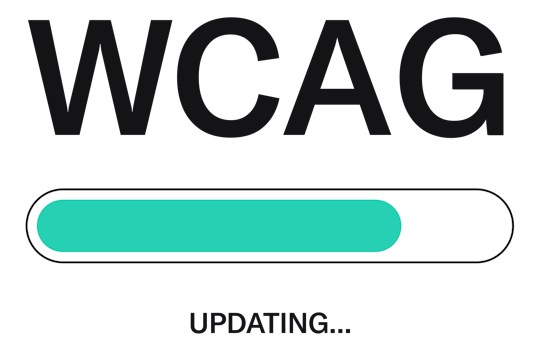AODA Website Compliance and Compliance Software
More than 16% of Canadians over the age of 15 are living with a disability, and this number will continue to grow as the population ages. To ensure that people with disabilities enjoy the same access as their fellow citizens to government and commercial services, the federal government protects their rights in legislation, principally the Canadian Charter of Rights and Freedoms and the Canadian Human Rights Act.
The provincial governments in Canada have also passed legislation to ensure equal rights for all regardless of ability. As the largest province, Ontario has led the way in defining how accessibility law relates to websites, and in setting out clear deadlines and penalties for non-compliance. Learn more about Accessibility for Ontarians with Disabilities Act (AODA) and AODA compliance.
What is the Accessibility for Ontarians with Disabilities Act (AODA)?
The Ontario Government introduced the Accessibility for Ontarians with Disabilities Act (AODA) in 2005. The original goal of the Ontario Disability Act was to identify and remove access barriers (physical and virtual) for people with disabilities by 2025. The AODA applies to government bodies of all types, non-profit organizations, and commercial organizations in Ontario with at least one employee.
The AODA sets out general requirements alongside five standards:
- Customer Service
- Information and Communication
- Employment
- Transportation
- Design of Public Spaces
If you found our website by searching on keywords such as “AODA compliance,” then you’re most likely interested in how the first two AODA compliance standards define what your organization must do to ensure all have equal access to your digital information resources. This short webpage will explain who the AODA applies to, what it requires, the risks of non-compliance (and benefits of compliance), and how to bring your website up to scratch.
The Customer Service Standards of the AODA apply to both face-to-face and remote service – which increasingly means online service. The Information and Communications Standards of the AODA require all government organizations, as well as all commercial organizations with at least 50 employees, to meet defined accessibility standards for their websites. The original deadline for doing so was January 1, 2014, and tougher standards came into force on January 1, 2021.
What Kinds of Businesses must Comply with AODA Compliance Standards?
In general, AODA compliance is required for all government organizations and all commercial organizations that provide goods, services, or facilities to the public and that have at least one employee in Ontario. But when it comes to AODA website compliance, small businesses (those with one to 49 employees) are exempt. Large businesses (defined as those with 50 or more employees) are required to meet website accessibility standards.
It is important to note that the location of a company’s headquarters is not relevant in determining the need to comply with the AODA. Simply having a single employee in Ontario triggers the requirement to comply with the law. In addition, public-sector organizations of all sizes, together with businesses or non-profits with 20 or more employees, must complete and submit annual Accessibility Compliance Reports.
How Does the Ontario Accessibility Act Relate to Web Content Accessibility Guidelines (WCAG)?
In line with many other regional and national accessibility legislation frameworks, the AODA uses the Web Content Accessibility Guidelines (WCAG) as its benchmark for determining compliance. Developed by the World Wide Web Consortium (W3C), these digital accessibility guidelines apply to dynamic content, multimedia, mobile content and non-web information and communications technologies.
WCAG sets out four key principles, requiring website content and controls to be:

Perceivable
A website is deemed to be perceivable if both the information it contains (its content) and the components of its user interface (clickable links, text boxes, buttons and so on) are presented so that all users can perceive them using one or other of their senses. In other words, if any of a website’s content or controls are invisible to any user, then the website fails the perceivability test.

Operable
A website is deemed to be operable if all users can interact effectively with the user interface to navigate the website. If the website contains interactive components, then all users should be able to operate those components. If the interface requires the user to interact in a way that is impossible for them, then the website fails the operability test.

Understandable
A website is deemed to be understandable if both its information (content) and its user interface components can be readily understood. If a user cannot understand how a website works or what the information on the website means, then it fails the understandability test.

Robust
A website is deemed to be robust if it can be interpreted by the full range of possible user agents—not only standard web browsers, but also assistive technologies such as screen readers. And this is not a one-off goal: as user agents and technologies continue to evolve, the content must remain accessible.
The current version of the guidelines is WCAG 2.1
The W3C continues to update the requirements as technologies and digital experiences become more sophisticated. As WCAG is an advisory standard rather than a legal framework, we usually talk about WCAG conformance rather than compliance. WCAG has three levels of conformance:
Level A
Level A indicates the minimum level of conformance; you need to achieve this first before addressing Level AA
Level AA
Level AA, which provides the standard level of conformance that most organizations target.
Level AAA
Similarly, Level AAA incorporates the previous level’s criteria, building on them to provide the most comprehensive conformance.
These levels break down into numerous individual guidelines, effectively creating an AODA compliance checklist. Between 2014 and 2020, AODA compliance for public-sector organizations and for businesses with at least 50 employees required conformance to the Level A standard of WCAG for new or significantly redesigned websites.
From 2021 onwards, AODA compliance demands conformance to the Level AA standard of WCAG – so even if your organization was previously compliant, you will need to up your game considerably. Remember also that WCAG conformance (and, by extension, AODA compliance) is not just for HTML content, but also for any digital content such as PDF documents and videos that you host on your website.
AODA Requirements: Risks of Non-Compliance and Benefits of Compliance
Non-compliance with the AODA carries the risk of large financial penalties. The law sets high maximum penalties for violations:
- A person or an unincorporated organization can be fined up to CA$50,000 per day until the violation is resolved.
- A corporation can be fined up to CA$100,000 per day.
- Company directors with fiduciary responsibility can be fined up to CA$50,000 per day.
In practice, these maximum daily penalties would only be applied in cases where the violation had a major impact and where the penalized organization had a significant history of violations. As standard, both the violations and the contravention history will be given one of three grades – minor, moderate, or major – and the combination of these two grades will determine the amount of the penalty.
For individuals and unincorporated organizations, the standard daily penalty for violating the AODA requirements will range from CA$200 (minor impact, minor history of contraventions) to CA$2,000 (major impact, major history of contraventions). For corporations, the standard daily penalty will range from CA$500 to $15,000.
Financial penalties are not the only risk of failing to maintain AODA compliance. Organizations with inaccessible websites can face lengthy, costly, and embarrassing legal proceedings, potentially with significant damage to their brand. Consumers increasingly prefer to buy from companies that align with their personal values – 60% of people over the age of 55 rate this as an important factor in their purchasing decisions, a figure that rises to 73% and 83% respectively in the 35-54 and 18-34 age brackets. Failing to maintain an AODA-compliant website could therefore see your brand left out in the cold.
Benefits of AODA Compliance
Ensuring that people of all abilities can access information and services online is clearly the right thing to do from an ethical perspective. It’s also the right thing to do from the financial perspective. According to the Royal Bank of Canada, people with disabilities have an estimated spending power of about $25 billion annually across Canada.
The benefits of AODA website compliance include:
- Reduced legal risk.
- Reduced risk of financial penalties.
- Improved user experience for all.
- Enhanced ability to reach and sell to the 16% of Canadian consumers who are living with a disability.
How Do You Know if Your Website Meets AODA Compliance Standards?

The Level AA standard of WCAG 2.0 acts as a convenient AODA compliance checklist, helping organizations to understand what they must do to meet AODA requirements.
However, determining your performance against the four key principles of WCAG accessibility requires extensive website testing – and not as a one-off process, but every time you add new content or change the structure of your website.
Software can play an important role in testing for conformance and helping organizations to remediate issues. AudioEye's Web Accessibility Checker provides a free testing tool. Simply enter your website URL, the tool scans that page, and you’re provided with a list of any WCAG errors our automation detects.
However, when you’re trying to conform with guidelines rather than prescriptive regulations, machine intelligence can only take you so far. For example, WCAG states that “instructions need to be clear and simple” — which means that you need to add human expertise and judgement into the mix.
Start Your Accessibility Journey With AudioEye
AudioEye’s hybrid platform combines intelligent automated remediation with the industry's leading accessibility experts and testers to deliver rapid, sustainable conformance to the current WCAG Level AA standard.
Our holistic approach includes both automated and manual identification and assistive technology testing, accessibility reporting, ongoing maintenance and monitoring, web personalization tools, training/resources, AudioEye Trusted Certification, and an accessibility claims commitment that goes further than any other solution in the marketplace.
Get on the fast track to AODA compliance with a free 14-day trial of AudioEye today!